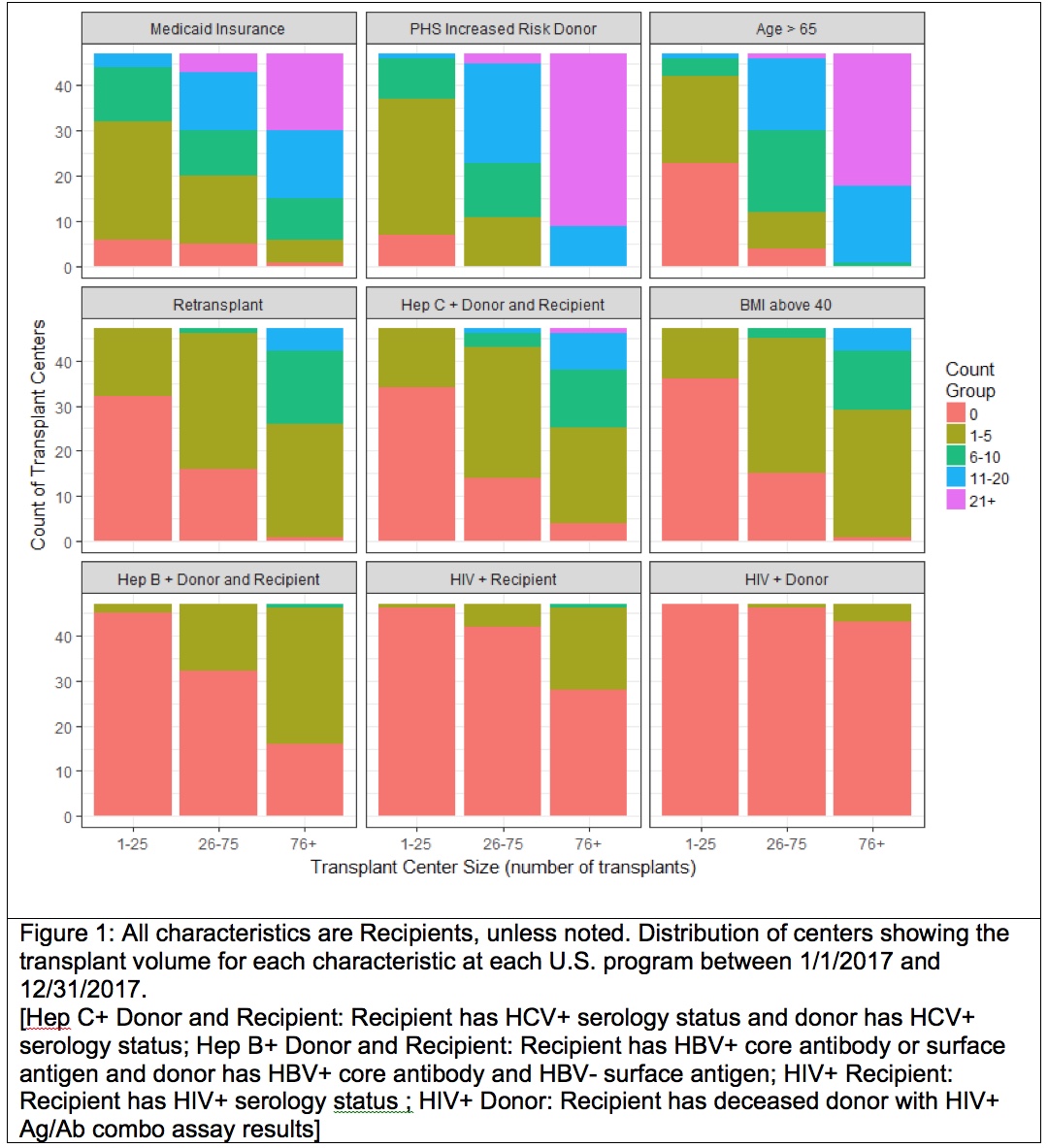Liver Transplant Centers Select Different Characteristics for Recipients and Deceased Donors: Implications for Patients When Choosing a Center
1Hennepin Healthcare Research Institute, Minneapolis, MN, 2College of Design, University of Minnesota, Minneapolis, MN, 3Department of Surgery, University of Minnesota, Minneapolis, MN, 4Division of Gastroenterology, Hepatology, and Nutrition, University of Minnesota, Minneapolis, MN, 5Division of Gastroenterology and Hepatology, Stanford University, Stanford, CA, 6Division of Gastroenterology, University of Washington, Seattle, WA, 7Scientific Registry of Transplant Recipients, Minneapolis, MN
Meeting: 2019 American Transplant Congress
Abstract number: A308
Keywords: Liver transplantation, Patient education, Screening
Session Information
Session Name: Poster Session A: Liver: Recipient Selection
Session Type: Poster Session
Date: Saturday, June 1, 2019
Session Time: 5:30pm-7:30pm
 Presentation Time: 5:30pm-7:30pm
Presentation Time: 5:30pm-7:30pm
Location: Hall C & D
*Purpose: When patients can choose the liver transplant center at which to establish care, a prior knowledge of center acceptance practices (of candidates and donors) can be valuable. Recent transplant volumes of recipient and deceased donor characteristics may be a useful surrogate for selection criteria at different centers.
*Methods: We analyzed recent liver recipient data from the Scientific Registry of Transplant Recipients (SRTR) to describe how recipient characteristics (e.g. age, Medicaid use, HIV status) vary across centers. SRTR data included recipients (n=8082) and donors at each U.S. program between 1/1/2017 and 12/31/2017. The distribution of recipient characteristics was plotted, grouped by small (1-25 transplants/year), medium (26-75 transplants/year), and large (76+ transplants/year) sized centers (dividing all centers approximately into thirds).
*Results: Several recipient characteristics reflect variation for each category of center size. For example, liver transplant volume can range from 0 to greater than 21 for medium or large size centers for Medicaid Insurance, Age > 65, and Hep C+ (serology status) Donor and Recipient. Other recipient characteristics (e.g. BMI > 40, HIV+ serology status) remain less common and many centers do not transplant these recipients.
*Conclusions: Recipient and donor characteristics vary across centers. Data describing recent recipients may be useful to candidates in order to select a center with recent experience transplanting patients like themselves. Additional research is warranted to identify relationships between recipient data and candidate acceptance criteria and to understand patient priorities and perceptions of this information when displayed on center reports (www.myorgantransplantcentersearch.org).
To cite this abstract in AMA style:
Schaffhausen CR, Bruin MJ, Chu S, Schladt D, Chinnakotla S, Lake JR, Kim W, Biggins SW, Snyder JJ, Kasiske BL, Israni AK. Liver Transplant Centers Select Different Characteristics for Recipients and Deceased Donors: Implications for Patients When Choosing a Center [abstract]. Am J Transplant. 2019; 19 (suppl 3). https://atcmeetingabstracts.com/abstract/liver-transplant-centers-select-different-characteristics-for-recipients-and-deceased-donors-implications-for-patients-when-choosing-a-center/. Accessed December 23, 2025.« Back to 2019 American Transplant Congress

